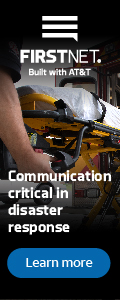BUXUS: Pipeline Information the Way Responders Want It
January 25, 2022
 By Lindsay Sander, principal, Sander Resources
By Lindsay Sander, principal, Sander Resources
Preparing for the High Impact, Low Frequency Event
Pipes. More than 3.3 million miles of buried pipelines, to be exact, support every aspect of our daily lives. While they are the safest, most efficient, and economic way to transport our energy resources, they also pose a risk to the health and safety of our communities. While operators implement incredible operations and maintenance programs to prevent an event from ever occurring, these high impact, low frequency events do occur. More than 5,000 incidents, some catastrophic, have happened in the last 20 years.
Potentially, the actions of all parties in the first 30 to 60 minutes after a pipeline incident will dramatically affect the impact and remediation needed to address the initial incident. This means information sharing, training, and the established relationship between the parties are all critical.
Pipeline Emergency Preparedness
Pipeline operators take a number of proactive steps to prepare for an emergency. One of these activities is establishing relationships with emergency responders and conducting what is often referred to as “liaison activities.” Most operators and emergency officials believe that it is better to meet and have a relationship with someone before you need them. Operators are required by federal and state law to accomplish four specific goals:
- Learn the responsibility and resources of each government organization that may respond to a gas pipeline emergency;
- Acquaint the officials with the operator’s ability in responding to a gas pipeline emergency;
- Identify the types of gas pipeline emergencies of which the operator notifies the officials; and
- Plan how the operator and officials can engage in mutual assistance to minimize hazards to life or property.
Pipeline operators have historically attempted to achieve these goals by liaising with emergency officials within the counties in which their assets are located in three main ways: (1) annual mailings or emails to emergency officials; (2) annual phone calls to emergency officials; and (3) annual meetings with emergency officials. Through these efforts, operators have attempted to give responders maps of the operators’ pipeline assets within a given county and a printed brochure containing statutorily prescribed messaging, including the information required to achieve the desired goals.
The Problem: Liaison Activities Between Operators and Responders are Decreasing
Since September 11, 2001, the role of emergency officials has become more challenging as officials must now anticipate, train for, and respond to man-made mass casualty events, in addition to maintaining proficiency in the more “traditional” services they provide in response to fires, accidents, and medical emergencies. At the same time, demand for “less traditional” emergency services, such as responding to non-emergency community-based responsibilities, has also increased. The net effect of these changes is that the time available to emergency officials to successfully meet each of these challenges is constantly shrinking. Each of these activities are critically important to the mission emergency officials must perform and must therefore be given its due time and attention.
Operators are also starting to realize that the methods historically used to “establish and maintain liaison” with emergency officials, though convenient for pipeline operators, have been far less useful for the emergency responders themselves. Between the increased demands on responders’ time, especially the need to focus on more high-frequency events, and current pandemic restrictions, it is more difficult to accomplish the goals of the pipeline operators, even through the traditional collaborative community meetings.
BUXUSTM is a New Free Application That Solves These Problems and More
BuxusTM, Latin for “pipe,” is a new mobile application designed to provide critical information on pipelines around the clock and regardless of having cell phone or Wi-Fi coverage. The idea is to immediately provide the information needed by key stakeholders at the touch of a button before and during a pipeline emergency, regardless of whether or not an in-person meeting has occurred.
BuxusTM is funded by pipeline operators and is FREE to emergency officials. Once downloaded, BuxusTM provides emergency officials with access from their mobile devices to:
- information on commodities transported by operator and pipelines for those that subscribe to the BuxusTM system;
- emergency contact information by operator and pipeline;
- hazards posed by commodity type;
- emergency response actions to be taken and/or avoided;
- interactive maps; and
- a portal to request specific information or resources from an operator.
With BuxusTM, emergency officials can now have the information they need on pipelines in their jurisdiction(s) just by picking up their mobile device(s). It is this powerful yet simple functionality that has led to the National Volunteer Fire Council (NVFC) and the International Association of Fire Chiefs (IAFC) supporting the efforts of BuxusTM to ensure their members have access to the information they need in the way that they want it.
How to Get Started with BUXUSTM
Like everything about BuxusTM, getting started is effortless. Simply download BuxusTM for free from either the Apple or Google Play app stores. Once downloaded, click on the “Request Access” link on the home screen to begin the registration process. Complete a few questions to confirm your agency information and capabilities. This takes approximately three minutes. Collecting this information helps pipeline operators better evaluate collaborative plans and resources for emergency response. You may remember historically doing this at the meetings or via mail on an annual basis. The information will not be sold. Once the registration process is complete, sign into the app and download information about the pipeline operators in your response area.
Questions or Help
If you have any questions about the process, you can contact BuxusTM by phone at (844) 888-3318 or email at info@buxus.io. Alternatively, you can visit the BuxusTM web site at www.buxus.io and register for a webinar by clicking on the red bullseye that will guide you through the entire process, step-by-step.
Once you begin using BuxusTM, we hope you will not only share your experience with colleagues but encourage pipeline operators in your jurisdiction to add their assets to BuxusTM since the more emergency officials and pipeline operators that participate, the better BuxusTM works for everyone.



